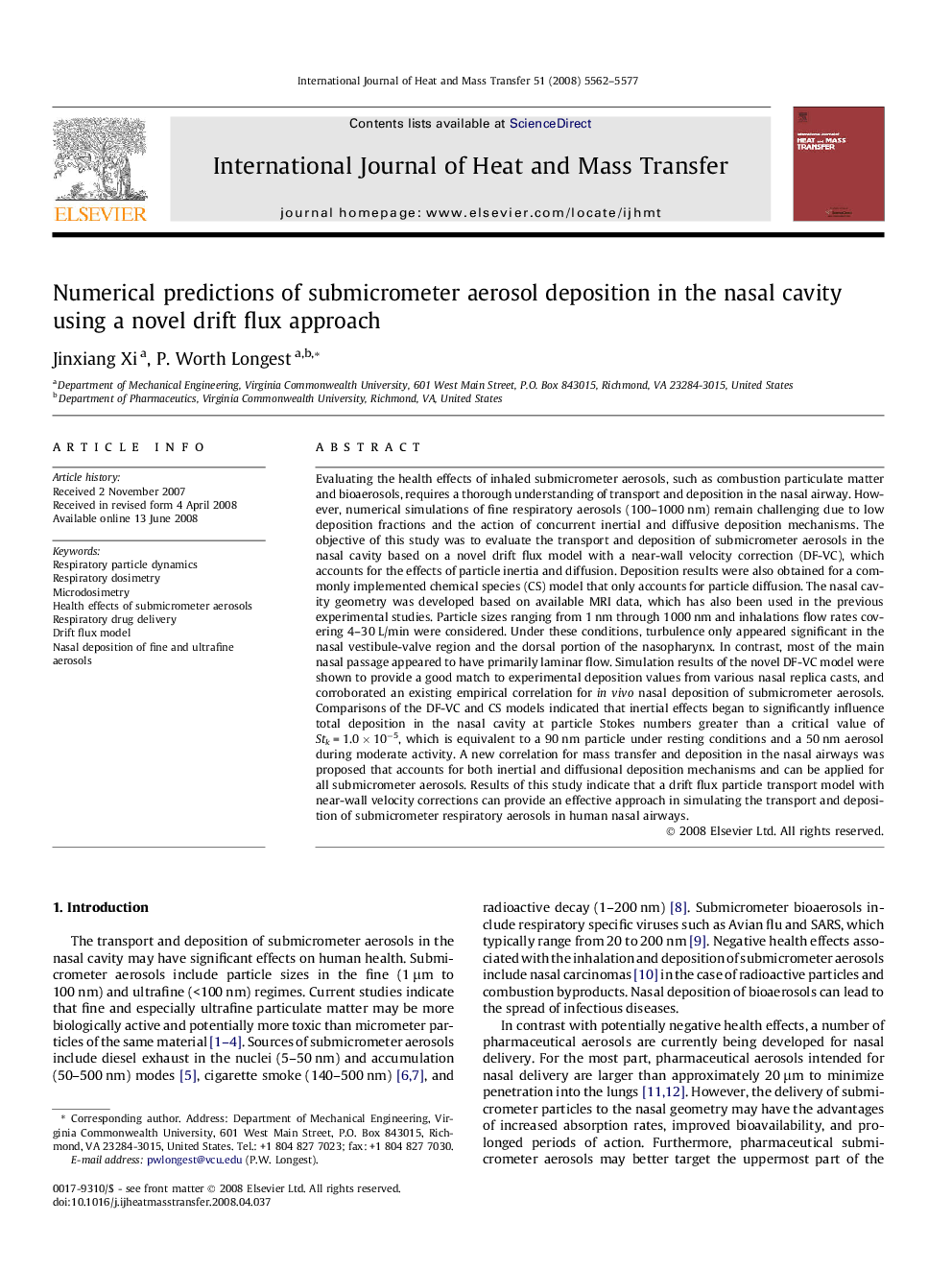| کد مقاله | کد نشریه | سال انتشار | مقاله انگلیسی | نسخه تمام متن |
|---|---|---|---|---|
| 660813 | 1458141 | 2008 | 16 صفحه PDF | دانلود رایگان |

Evaluating the health effects of inhaled submicrometer aerosols, such as combustion particulate matter and bioaerosols, requires a thorough understanding of transport and deposition in the nasal airway. However, numerical simulations of fine respiratory aerosols (100–1000 nm) remain challenging due to low deposition fractions and the action of concurrent inertial and diffusive deposition mechanisms. The objective of this study was to evaluate the transport and deposition of submicrometer aerosols in the nasal cavity based on a novel drift flux model with a near-wall velocity correction (DF-VC), which accounts for the effects of particle inertia and diffusion. Deposition results were also obtained for a commonly implemented chemical species (CS) model that only accounts for particle diffusion. The nasal cavity geometry was developed based on available MRI data, which has also been used in the previous experimental studies. Particle sizes ranging from 1 nm through 1000 nm and inhalations flow rates covering 4–30 L/min were considered. Under these conditions, turbulence only appeared significant in the nasal vestibule-valve region and the dorsal portion of the nasopharynx. In contrast, most of the main nasal passage appeared to have primarily laminar flow. Simulation results of the novel DF-VC model were shown to provide a good match to experimental deposition values from various nasal replica casts, and corroborated an existing empirical correlation for in vivo nasal deposition of submicrometer aerosols. Comparisons of the DF-VC and CS models indicated that inertial effects began to significantly influence total deposition in the nasal cavity at particle Stokes numbers greater than a critical value of Stk = 1.0 × 10−5, which is equivalent to a 90 nm particle under resting conditions and a 50 nm aerosol during moderate activity. A new correlation for mass transfer and deposition in the nasal airways was proposed that accounts for both inertial and diffusional deposition mechanisms and can be applied for all submicrometer aerosols. Results of this study indicate that a drift flux particle transport model with near-wall velocity corrections can provide an effective approach in simulating the transport and deposition of submicrometer respiratory aerosols in human nasal airways.
Journal: International Journal of Heat and Mass Transfer - Volume 51, Issues 23–24, November 2008, Pages 5562–5577